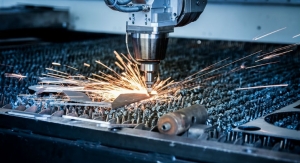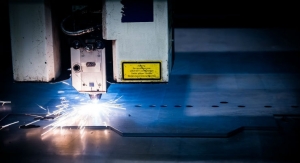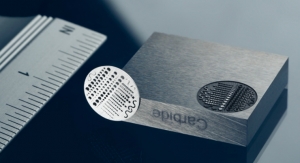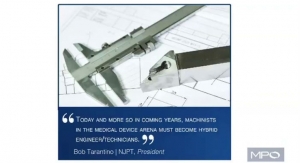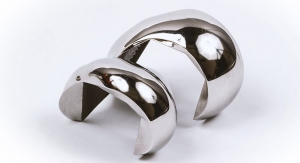Sam Brusco, Associate Editor01.30.19
Quality manufacturing can only occur with qualified workers on the shop floor. Unfortunately, the most necessary jobs are often the most difficult jobs to fill. CNC machine shops, production, and automation depend on skilled labor. And although the manufacturing industry on the whole is on the rise, for years now, there has been a shortage in the workforce that is limiting machine shops from finding great talent and fulfilling their needs.
This is in part due to the large number of Baby Boomers retiring from skilled labor positions, and young workers not entering into the workforce at a sufficient enough rate. A Deloitte and Manufacturing Institute study predicted American manufacturers will need to fill 3.5 million jobs by 2025, but also prognosticate 2 million of those spots will remain vacant due to the lack of skilled manufacturing jobs. So why has machining—and skilled labor in general—struggled to attract new talent?
“It is a two-fold failure, one on the part of the mass manufacturing industry and two on the vision of the current employment pool of potential candidates,” stated John MacDonald, president of AIP Precision Machining, a Daytona Beach, Fla.-based provider of precision machining services for the medical industry. “Unfortunately, the U.S. has become an extremely risk-averse society. Failure is truly viewed as just that, failure.”
“Talent in the machining trade is challenging to hire,” added Joshua Chaffee, sales engineer for ARCOR Laser Services, a Suffield, Conn.-based contract manufacturer that specializes in laser processing services, machining, and assembly. “We find that talent is either in the waning years of their career, green, and/or comfortable with their current employer. All these situations have their advantages and disadvantages, so flexible strategies are required.”
The “fail early and often” mindset is gaining prominence in the design world, spurring the creativity necessary to discover novel solutions. This had not been the case for some time because the medical device industry exhibits longer lead times and a rigorous regulatory process that can severely punish failure. But device firms are learning that discovering something doesn’t work early in the development process can actually prevent future development hardships.
Once efforts shift to the production floor, however, the fear of failure remains. While a part in the design stages can be reconfigured, a part already in process that is not manufactured correctly becomes a financial drain. Fortunately, the technological advancements specific to custom machining can work to alleviate these fears. Custom machining advances also contradict the notion that manufacturing jobs require no creativity or imagination.
“In custom machining, failure provides a great opportunity for learning and advancement,” MacDonald continued. “Mass production has rightly moved to systems and processes designed to fend off even the thought of failure. This all sounds great and makes sense for efficiency gains and lower failure rates, but the side effect is that it creates a robotic mindset that dulls the imagination. Due to mass production being the larger manufacturing footprint, many think that a career in manufacturing leads to a ‘dulling’ robotic mindset and therefore, who with any sense of creativity would want a career in manufacturing? This is, however, not the case in custom machining where creativity, imagination, and failure are welcome and rewarded. Those three traits provide a path to the creation of parts once thought impossible to manufacture. This cycle does not allow for dulling since our manufacturing lots are relatively small and constantly evolving—no boredom here as we have plenty of fresh canvas [upon which] to paint!”
According to American Machinist, as of 2016, nearly 70 percent of the machinist workforce was over the age of 45. Over the next 20 years, there must be some injection of youth into the industry to keep the skilled trade alive and well. Currently employed machinists can be the best source to recruit today’s young professionals into the profession and encourage that it is a rewarding career presenting both a creative outlet and opportunities for advancement—something crucial to the green workforce. New machinists are more likely to embrace the trade and stick around if they are given in-depth, hands-on training from senior machinists in the shop.
“We attract new talent through cooperative education programs/co-ops and internships,” said Dan Easley, COO of Laser Light Technologies, a Hermann, Mo.-based service provider of laser micromachining. “Using proactive recruiting, we typically find talent in their younger career stages looking for their next phase. Since we are a specialized business that requires additional skills, we also provide on-the-job training. We have world-class engineers and staff with focused expertise in research and development, processes, quality, mechanical, and software. The key to attracting new talent is to be proactive.”
Perhaps the most effective method to make an immediate impact is to reach out to local communities so the craft can be shared with families and students in the area. Most importantly, students have to become excited about the industry. Machining vendors may want to consider holding an open house at the machine shop and opening their doors to local schools, so students can see finished projects and watch the machines at work.
“We find mentoring recent graduates from tech schools or two-year programs works well,” explained Chaffee. “Our senior talent can then impart their knowledge base and best practices. We have partnered with local community colleges who offer very comprehensive machining and laser-based curriculum. These partnerships have proven successful and give us access to students who want to perform.”
The apprentice and/or mentoring partnership may prove to be most effective in attracting and retaining new machining talent. Apprenticeships began in the U.S. when craft workers coming to the New World from Europe brought the practice of indenture with them. Back then, the relationship was of a significantly servile nature, with workers laboring to pay off a debt.
Modern apprenticeship removes the debt, but the transfer of skills remains. Modern apprenticeship programs have proven to be crucial for manufacturers. Their programs not only develop a skilled blue-collar workforce, but also forge a path for those workers to progress to white-collar levels in their profession—all without incurring crippling college debt. And in some cases, naturally technically skilled candidates may be identified for an immediate white-collar role. This can be particularly valuable to attract the “must have it now” younger generation of workers, and can reveal hidden talent in both the existing and future workforce.
“In general, finding strong, talented individuals with technical and engineering backgrounds is a challenge,” said Anthony Sanzari, VP Surgical Products of Weiss-Aug. The Surgical Products Division of The Weiss-Aug Group is focused on the development and manufacture of device components and assemblies used in surgical instrumentation. “Fortunately, our organization has a strong, well-established base that is leading the industry both in learning the latest advances in machining and laser technologies and in development of more junior talent in these key areas. We invest in apprenticeship and mentorship programs, whereby our apprentices gain experience in all aspects of product manufacture, including our design, tooling, precision-CNC, EDM, and laser technology programs. Additionally, through heavy capital investment and continued training, we have created a culture of innovation that attracts and retains talent. We offer these team members state-of-the-art equipment, software, and a ‘technology-based’ infrastructure that rivals larger medical device OEMs. This strategy ensures we have proper resources to sustain our growth and meet our customer requirements, both for today and the future.”
Investing in an apprenticeship program may sound like a daunting task, but for many manufacturers, a lot of the program’s components are already in place. Sometimes a reconfiguration of the company’s existing training and education models is all that is necessary to fit the modern model of a custom machining apprenticeship. However, this transformation requires a significant time and personnel expense. Firms must be willing to both revisit their current recruitment methodologies and be receptive to restructuring their current budgets to allow for the revamped program. But those who have put modern apprenticeship programs in place are finding they instill a loyal, passionate, and highly capable workforce.
“It is very difficult to find skilled CNC machinists as well as wire EDM setup people,” said Bob Tarantino, president of New Jersey Precision Technologies, a Mountainside, N.J.-based EDM contract manufacturer for the medical device industry. “We have learned that we must grow our own skilled technicians. We constantly train bright engineers and technicians to learn the techniques we have developed over the years through documented work instructions. Our training program for wire EDM and sinker EDM technicians as well as CNC mill set-up technicians consist of over 75 documented work instructions and tests. Our entry-level technicians or Level 1 techs are working on learning and training on the job as well as in the classroom at NJPT. When they achieve a specific number of work instructions, they move on to Level 2 and then on to Level 3. Many Level 3 technicians become cell supervisors and managers. All our technicians are required to attend several outside training seminars per year. Without these programs, we would not have been able to grow and attract new talent. Our current operation is managed and operated by these talented technicians working three daily shifts, seven days per week, operating almost 50 state-of-the-art Mitsubishi EDM machines and dozens of CNC mills and turning centers.”
High-precision machining is so much more than the lathes and mills of years past. Modern CNC Swiss machines can go as high as 13-axis to produce parts with complex geometries and can be programmed for optimal speeds and feeds. Multiple spindle machining is able to complete parts in a single setup, and some machines include capabilities like turning with live tooling and wire EDM. Laser machining continues to expand as well. Device manufacturers and their contract manufacturers rely on laser systems to make precise components with high levels of speed and accuracy, often at extremely low tolerances.
As the capabilities of machining technologies grow, machine operators must expand their knowledge as well. Machinists of the future, especially those interested in working in medical manufacturing, will require at least some engineering and software knowledge to operate complex precision machining equipment.
“Machinists will need to continue to train on the latest technologies (both hardware and software) to remain current as additive manufacturing and laser technologies continue to improve and replace more traditional methods,” recommended Sanzari. “Working in solids, in multi-axis spatial geometry, and being versed in multiple technologies will be key to long-term success.”
Emerging hybrid manufacturing techniques are also pushing machinists to broaden their skill sets. Hybrid laser-Swiss equipment is gaining popularity as a method to speed up production and reduce the number of steps required to make a component or device. Hybrid laser-Swiss equipment combines Swiss turning, laser cutting, and laser welding operations into one setup so parts can be produced at a single station.
There is also a push to practice “hybrid manufacturing,” merging multi-axis CNC machining with laser sintering. Hybrid manufacturing involves the combination of additive and subtractive manufacturing in a single machine system. In this process, the machine pretty much creates its own near-net part shape with onboard laser sintering, and the part is then machined to tolerance with the CNC portion. To be successful in this process, educational programs must add additive manufacturing content to the traditional school curriculum or training paradigm.
“Future machinists must be well-rounded and understand complementary processes,” advised Chaffee. “Hybrid technologies are becoming the norm and will continue to advance rapidly. To remain competitive, knowledge of these related processes will be a huge advantage. Knowledge of end use of the device is always a plus. This allows for open discussion of potential manufacturing roadblocks and/or process improvements. Cost drivers in the manufacturing process can also be discussed if the machinist understands fit, form, and function.”
Aspiring machinists or those looking to enter the custom machining industry must also be reasonably well-educated in the software increasingly integrated into machining and inspection systems. For instance, faster multicore and embedded processors are combining with cloud-based advancements to increase the capabilities of computer-aided design and manufacturing (CAD/CAM) software beyond its traditional work scope. CAD/CAM software is also moving deeper into part inspection and surface finish measurement. The software can now integrate finite element analysis (FEA) to test and predict how materials machined on a prototype will perform before anything is actually fabricated.
Familiarity with material resource planning (MRP) and enterprise resource planning (ERP) software must also begin to make its way into the machinist’s tool belt. An ERP system takes the manufacturer’s existing operational data systems, integrating them into an automated platform to optimize operations and provide decision-makers with financial and production data. MRP/ERP helps a company track its supply chain operations and link the data into a central platform so financial data about the processes can be analyzed.
So not only must aspiring machinists stay abreast of hardware advancements, their education and training must cover crucial software systems.
“Today and more so in coming years, machinists in the medical device arena must become hybrid engineer/technicians,” said Tarantino. “Machinists must learn CAD/CAM and be as comfortable using computer-aided design and machining software and MRP/ERP software as they are operating a machine. The CNC controls are now integrated into our local area networks and ERP systems for monitoring production and operations. This technology must be understood and used on the manufacturing floor.”
Machinists would do well to have significant engineering knowledge in their arsenal as well (and vice versa). The design vs. manufacturing rift can be made much smaller if either department took the time to learn the intricacies of the other. Engineers and machinists are both essential to a manufacturing operation, but they don’t always agree—engineers may complain that machinists don’t follow their instructions, and machinists complain that the engineers never properly annotate their drawings.
A machinist with engineering experience (and vice versa) is of enormous value. Proper application of design principles throughout development vastly streamlines the process. Understanding what can and can’t be done saves time and money, and puts the individual and company ahead of the competition. During the design process, the machinist with engineering experience can look at the project from both sides, and design according to how difficult it might be to manufacture. If both sides have a strong knowledge of design for manufacturing (DFM), the risk of having to make alterations to the design of a machined part is enormously reduced.
“Most of our EDM and CNC setup technicians are engineers having an AS or BS in ME, MET, or IE Engineering,” Tarantino continued. “Our 100 percent tuition reimbursement program and continuous skills training enables us to attract new talent and keep these engineers working in manufacturing areas and continuously improving their skills as well as our manufacturing processes.”
Laser micromachining is a process used to make tiny features in parts, measured in micrometers or millimeters. Pulsed lasers are used to complete this type of work by depositing tiny, finite amounts of energy into a material, resulting in precise and reproducible material removal. Two common micromachining processes are laser drilling and laser micro milling. Laser drilling is a non-contact process to produce micro-holes in a variety of materials. Laser micro milling involves removing material to a specified depth, creating relief features like grooves, slots, and profiles without cutting through the material. Laser-cut metal or biodegradable polymer stents are made this way—high-precision cutting is achieved using tailored continuous wave (CW)-modulated fiber lasers or femtosecond lasers.
The laser machining business is characterized by transforming ideas into reliable, cost-effective production techniques. And success as a major player in the market necessitates much more than merely offering top-of-the-line laser systems. An open-minded approach is necessary to thrive, as well as facilities and experienced staff for comprehensive laser application evaluations. Global manufacturers will also be seeking partners with global reach. Production facilities can be shifted for cost-reduction within months, and design and development units may be located on separate continents from manufacturing.
“Our niche is laser micromachining, so in comparison to traditional machining we face both similar and dissimilar challenges,” said Matt Nipper, senior engineering manager of Laser Light Technologies. “One common challenge for all U.S. manufacturing is to maintain cost-competitive offerings compared to international providers with access to lower labor costs. In our market, we have to be competent in many different areas and keep abreast of developments in both automation and machine efficiency. The combination of these different technologies drive the solutions for our customers.”
Having the latest and greatest machining equipment is undoubtedly necessary for a successful manufacturing partnership, but the machines are not yet fully autonomous. They still require a skilled operator to successfully produce robust, quality parts suited for the precise demands of the medical device industry. It takes years of technical tool and advanced manufacturing to become a certified machinist. Many view machinists as simply people operating by hardware and producing or cutting materials into what is intended.
But for the medical device industry, this just isn’t true. An effective CNC machinist must have the tolerance to gather and produce parts created from a wide range of materials and work within size distinctions in the micrometer range. They must have ample knowledge and experience of laser cutting, screw machining, stamping, machine maintenance, machine building, metalforming, and a variety of other technical skills.
Although CNC machine popularity has risen because they reduce manpower, reduce time, and increase product quality, the machines still require machinist oversight should a failure occur. A CNC machinist should be able to identify and interpret the 2D engineering blueprints or illustrations of the machines or components, and economically complete and plan the manufacturing of all components. And apart from the machine’s technical aspects, the machinist must know how to formulate procedures, set priorities and schedules, and create a mental 3D image of the product before it is manufactured. They must pay careful attention to errors found in the equipment or components, and correct them immediately.
Above all, machinists must maintain a high level of craftsmanship. They shouldn’t have a problem finding the most safe, effective, and economical ways to boost productivity within a company or production.
“Machining always has been, and always will be, about finding talented craftsmen,” concluded MacDonald. “If I have learned anything in my 27 years working in and around machine shops, it’s that it is all about the people. However, the trades continue to struggle to attract new talent. The men and women who machine custom tight tolerance parts for a living—especially in a true job shop environment—are more artists than employees. Creative thinking mixed with technical know-how and good old farm hand solutions to new challenges provides for a very rewarding and satisfying career. The best way to learn such a trade is by working in an apprentice type capacity. It does not come quickly, but the knowledge gained by working with and around experienced machinists forms the basis of learning this trade. Machine technology has advanced exponentially and has allowed companies like ours to deliver parts we would have been unable to with older technology. But the machines and technology are just a nice pile of metal, wires, and circuitry without the hands and mind of a creative programmer/machinist.”
This is in part due to the large number of Baby Boomers retiring from skilled labor positions, and young workers not entering into the workforce at a sufficient enough rate. A Deloitte and Manufacturing Institute study predicted American manufacturers will need to fill 3.5 million jobs by 2025, but also prognosticate 2 million of those spots will remain vacant due to the lack of skilled manufacturing jobs. So why has machining—and skilled labor in general—struggled to attract new talent?
“It is a two-fold failure, one on the part of the mass manufacturing industry and two on the vision of the current employment pool of potential candidates,” stated John MacDonald, president of AIP Precision Machining, a Daytona Beach, Fla.-based provider of precision machining services for the medical industry. “Unfortunately, the U.S. has become an extremely risk-averse society. Failure is truly viewed as just that, failure.”
“Talent in the machining trade is challenging to hire,” added Joshua Chaffee, sales engineer for ARCOR Laser Services, a Suffield, Conn.-based contract manufacturer that specializes in laser processing services, machining, and assembly. “We find that talent is either in the waning years of their career, green, and/or comfortable with their current employer. All these situations have their advantages and disadvantages, so flexible strategies are required.”
The “fail early and often” mindset is gaining prominence in the design world, spurring the creativity necessary to discover novel solutions. This had not been the case for some time because the medical device industry exhibits longer lead times and a rigorous regulatory process that can severely punish failure. But device firms are learning that discovering something doesn’t work early in the development process can actually prevent future development hardships.
Once efforts shift to the production floor, however, the fear of failure remains. While a part in the design stages can be reconfigured, a part already in process that is not manufactured correctly becomes a financial drain. Fortunately, the technological advancements specific to custom machining can work to alleviate these fears. Custom machining advances also contradict the notion that manufacturing jobs require no creativity or imagination.
“In custom machining, failure provides a great opportunity for learning and advancement,” MacDonald continued. “Mass production has rightly moved to systems and processes designed to fend off even the thought of failure. This all sounds great and makes sense for efficiency gains and lower failure rates, but the side effect is that it creates a robotic mindset that dulls the imagination. Due to mass production being the larger manufacturing footprint, many think that a career in manufacturing leads to a ‘dulling’ robotic mindset and therefore, who with any sense of creativity would want a career in manufacturing? This is, however, not the case in custom machining where creativity, imagination, and failure are welcome and rewarded. Those three traits provide a path to the creation of parts once thought impossible to manufacture. This cycle does not allow for dulling since our manufacturing lots are relatively small and constantly evolving—no boredom here as we have plenty of fresh canvas [upon which] to paint!”
According to American Machinist, as of 2016, nearly 70 percent of the machinist workforce was over the age of 45. Over the next 20 years, there must be some injection of youth into the industry to keep the skilled trade alive and well. Currently employed machinists can be the best source to recruit today’s young professionals into the profession and encourage that it is a rewarding career presenting both a creative outlet and opportunities for advancement—something crucial to the green workforce. New machinists are more likely to embrace the trade and stick around if they are given in-depth, hands-on training from senior machinists in the shop.
“We attract new talent through cooperative education programs/co-ops and internships,” said Dan Easley, COO of Laser Light Technologies, a Hermann, Mo.-based service provider of laser micromachining. “Using proactive recruiting, we typically find talent in their younger career stages looking for their next phase. Since we are a specialized business that requires additional skills, we also provide on-the-job training. We have world-class engineers and staff with focused expertise in research and development, processes, quality, mechanical, and software. The key to attracting new talent is to be proactive.”
Perhaps the most effective method to make an immediate impact is to reach out to local communities so the craft can be shared with families and students in the area. Most importantly, students have to become excited about the industry. Machining vendors may want to consider holding an open house at the machine shop and opening their doors to local schools, so students can see finished projects and watch the machines at work.
“We find mentoring recent graduates from tech schools or two-year programs works well,” explained Chaffee. “Our senior talent can then impart their knowledge base and best practices. We have partnered with local community colleges who offer very comprehensive machining and laser-based curriculum. These partnerships have proven successful and give us access to students who want to perform.”
The apprentice and/or mentoring partnership may prove to be most effective in attracting and retaining new machining talent. Apprenticeships began in the U.S. when craft workers coming to the New World from Europe brought the practice of indenture with them. Back then, the relationship was of a significantly servile nature, with workers laboring to pay off a debt.
Modern apprenticeship removes the debt, but the transfer of skills remains. Modern apprenticeship programs have proven to be crucial for manufacturers. Their programs not only develop a skilled blue-collar workforce, but also forge a path for those workers to progress to white-collar levels in their profession—all without incurring crippling college debt. And in some cases, naturally technically skilled candidates may be identified for an immediate white-collar role. This can be particularly valuable to attract the “must have it now” younger generation of workers, and can reveal hidden talent in both the existing and future workforce.
“In general, finding strong, talented individuals with technical and engineering backgrounds is a challenge,” said Anthony Sanzari, VP Surgical Products of Weiss-Aug. The Surgical Products Division of The Weiss-Aug Group is focused on the development and manufacture of device components and assemblies used in surgical instrumentation. “Fortunately, our organization has a strong, well-established base that is leading the industry both in learning the latest advances in machining and laser technologies and in development of more junior talent in these key areas. We invest in apprenticeship and mentorship programs, whereby our apprentices gain experience in all aspects of product manufacture, including our design, tooling, precision-CNC, EDM, and laser technology programs. Additionally, through heavy capital investment and continued training, we have created a culture of innovation that attracts and retains talent. We offer these team members state-of-the-art equipment, software, and a ‘technology-based’ infrastructure that rivals larger medical device OEMs. This strategy ensures we have proper resources to sustain our growth and meet our customer requirements, both for today and the future.”
Investing in an apprenticeship program may sound like a daunting task, but for many manufacturers, a lot of the program’s components are already in place. Sometimes a reconfiguration of the company’s existing training and education models is all that is necessary to fit the modern model of a custom machining apprenticeship. However, this transformation requires a significant time and personnel expense. Firms must be willing to both revisit their current recruitment methodologies and be receptive to restructuring their current budgets to allow for the revamped program. But those who have put modern apprenticeship programs in place are finding they instill a loyal, passionate, and highly capable workforce.
“It is very difficult to find skilled CNC machinists as well as wire EDM setup people,” said Bob Tarantino, president of New Jersey Precision Technologies, a Mountainside, N.J.-based EDM contract manufacturer for the medical device industry. “We have learned that we must grow our own skilled technicians. We constantly train bright engineers and technicians to learn the techniques we have developed over the years through documented work instructions. Our training program for wire EDM and sinker EDM technicians as well as CNC mill set-up technicians consist of over 75 documented work instructions and tests. Our entry-level technicians or Level 1 techs are working on learning and training on the job as well as in the classroom at NJPT. When they achieve a specific number of work instructions, they move on to Level 2 and then on to Level 3. Many Level 3 technicians become cell supervisors and managers. All our technicians are required to attend several outside training seminars per year. Without these programs, we would not have been able to grow and attract new talent. Our current operation is managed and operated by these talented technicians working three daily shifts, seven days per week, operating almost 50 state-of-the-art Mitsubishi EDM machines and dozens of CNC mills and turning centers.”
High-precision machining is so much more than the lathes and mills of years past. Modern CNC Swiss machines can go as high as 13-axis to produce parts with complex geometries and can be programmed for optimal speeds and feeds. Multiple spindle machining is able to complete parts in a single setup, and some machines include capabilities like turning with live tooling and wire EDM. Laser machining continues to expand as well. Device manufacturers and their contract manufacturers rely on laser systems to make precise components with high levels of speed and accuracy, often at extremely low tolerances.
As the capabilities of machining technologies grow, machine operators must expand their knowledge as well. Machinists of the future, especially those interested in working in medical manufacturing, will require at least some engineering and software knowledge to operate complex precision machining equipment.
“Machinists will need to continue to train on the latest technologies (both hardware and software) to remain current as additive manufacturing and laser technologies continue to improve and replace more traditional methods,” recommended Sanzari. “Working in solids, in multi-axis spatial geometry, and being versed in multiple technologies will be key to long-term success.”
Emerging hybrid manufacturing techniques are also pushing machinists to broaden their skill sets. Hybrid laser-Swiss equipment is gaining popularity as a method to speed up production and reduce the number of steps required to make a component or device. Hybrid laser-Swiss equipment combines Swiss turning, laser cutting, and laser welding operations into one setup so parts can be produced at a single station.
There is also a push to practice “hybrid manufacturing,” merging multi-axis CNC machining with laser sintering. Hybrid manufacturing involves the combination of additive and subtractive manufacturing in a single machine system. In this process, the machine pretty much creates its own near-net part shape with onboard laser sintering, and the part is then machined to tolerance with the CNC portion. To be successful in this process, educational programs must add additive manufacturing content to the traditional school curriculum or training paradigm.
“Future machinists must be well-rounded and understand complementary processes,” advised Chaffee. “Hybrid technologies are becoming the norm and will continue to advance rapidly. To remain competitive, knowledge of these related processes will be a huge advantage. Knowledge of end use of the device is always a plus. This allows for open discussion of potential manufacturing roadblocks and/or process improvements. Cost drivers in the manufacturing process can also be discussed if the machinist understands fit, form, and function.”
Aspiring machinists or those looking to enter the custom machining industry must also be reasonably well-educated in the software increasingly integrated into machining and inspection systems. For instance, faster multicore and embedded processors are combining with cloud-based advancements to increase the capabilities of computer-aided design and manufacturing (CAD/CAM) software beyond its traditional work scope. CAD/CAM software is also moving deeper into part inspection and surface finish measurement. The software can now integrate finite element analysis (FEA) to test and predict how materials machined on a prototype will perform before anything is actually fabricated.
Familiarity with material resource planning (MRP) and enterprise resource planning (ERP) software must also begin to make its way into the machinist’s tool belt. An ERP system takes the manufacturer’s existing operational data systems, integrating them into an automated platform to optimize operations and provide decision-makers with financial and production data. MRP/ERP helps a company track its supply chain operations and link the data into a central platform so financial data about the processes can be analyzed.
So not only must aspiring machinists stay abreast of hardware advancements, their education and training must cover crucial software systems.
“Today and more so in coming years, machinists in the medical device arena must become hybrid engineer/technicians,” said Tarantino. “Machinists must learn CAD/CAM and be as comfortable using computer-aided design and machining software and MRP/ERP software as they are operating a machine. The CNC controls are now integrated into our local area networks and ERP systems for monitoring production and operations. This technology must be understood and used on the manufacturing floor.”
Machinists would do well to have significant engineering knowledge in their arsenal as well (and vice versa). The design vs. manufacturing rift can be made much smaller if either department took the time to learn the intricacies of the other. Engineers and machinists are both essential to a manufacturing operation, but they don’t always agree—engineers may complain that machinists don’t follow their instructions, and machinists complain that the engineers never properly annotate their drawings.
A machinist with engineering experience (and vice versa) is of enormous value. Proper application of design principles throughout development vastly streamlines the process. Understanding what can and can’t be done saves time and money, and puts the individual and company ahead of the competition. During the design process, the machinist with engineering experience can look at the project from both sides, and design according to how difficult it might be to manufacture. If both sides have a strong knowledge of design for manufacturing (DFM), the risk of having to make alterations to the design of a machined part is enormously reduced.
“Most of our EDM and CNC setup technicians are engineers having an AS or BS in ME, MET, or IE Engineering,” Tarantino continued. “Our 100 percent tuition reimbursement program and continuous skills training enables us to attract new talent and keep these engineers working in manufacturing areas and continuously improving their skills as well as our manufacturing processes.”
Laser micromachining is a process used to make tiny features in parts, measured in micrometers or millimeters. Pulsed lasers are used to complete this type of work by depositing tiny, finite amounts of energy into a material, resulting in precise and reproducible material removal. Two common micromachining processes are laser drilling and laser micro milling. Laser drilling is a non-contact process to produce micro-holes in a variety of materials. Laser micro milling involves removing material to a specified depth, creating relief features like grooves, slots, and profiles without cutting through the material. Laser-cut metal or biodegradable polymer stents are made this way—high-precision cutting is achieved using tailored continuous wave (CW)-modulated fiber lasers or femtosecond lasers.
The laser machining business is characterized by transforming ideas into reliable, cost-effective production techniques. And success as a major player in the market necessitates much more than merely offering top-of-the-line laser systems. An open-minded approach is necessary to thrive, as well as facilities and experienced staff for comprehensive laser application evaluations. Global manufacturers will also be seeking partners with global reach. Production facilities can be shifted for cost-reduction within months, and design and development units may be located on separate continents from manufacturing.
“Our niche is laser micromachining, so in comparison to traditional machining we face both similar and dissimilar challenges,” said Matt Nipper, senior engineering manager of Laser Light Technologies. “One common challenge for all U.S. manufacturing is to maintain cost-competitive offerings compared to international providers with access to lower labor costs. In our market, we have to be competent in many different areas and keep abreast of developments in both automation and machine efficiency. The combination of these different technologies drive the solutions for our customers.”
Having the latest and greatest machining equipment is undoubtedly necessary for a successful manufacturing partnership, but the machines are not yet fully autonomous. They still require a skilled operator to successfully produce robust, quality parts suited for the precise demands of the medical device industry. It takes years of technical tool and advanced manufacturing to become a certified machinist. Many view machinists as simply people operating by hardware and producing or cutting materials into what is intended.
But for the medical device industry, this just isn’t true. An effective CNC machinist must have the tolerance to gather and produce parts created from a wide range of materials and work within size distinctions in the micrometer range. They must have ample knowledge and experience of laser cutting, screw machining, stamping, machine maintenance, machine building, metalforming, and a variety of other technical skills.
Although CNC machine popularity has risen because they reduce manpower, reduce time, and increase product quality, the machines still require machinist oversight should a failure occur. A CNC machinist should be able to identify and interpret the 2D engineering blueprints or illustrations of the machines or components, and economically complete and plan the manufacturing of all components. And apart from the machine’s technical aspects, the machinist must know how to formulate procedures, set priorities and schedules, and create a mental 3D image of the product before it is manufactured. They must pay careful attention to errors found in the equipment or components, and correct them immediately.
Above all, machinists must maintain a high level of craftsmanship. They shouldn’t have a problem finding the most safe, effective, and economical ways to boost productivity within a company or production.
“Machining always has been, and always will be, about finding talented craftsmen,” concluded MacDonald. “If I have learned anything in my 27 years working in and around machine shops, it’s that it is all about the people. However, the trades continue to struggle to attract new talent. The men and women who machine custom tight tolerance parts for a living—especially in a true job shop environment—are more artists than employees. Creative thinking mixed with technical know-how and good old farm hand solutions to new challenges provides for a very rewarding and satisfying career. The best way to learn such a trade is by working in an apprentice type capacity. It does not come quickly, but the knowledge gained by working with and around experienced machinists forms the basis of learning this trade. Machine technology has advanced exponentially and has allowed companies like ours to deliver parts we would have been unable to with older technology. But the machines and technology are just a nice pile of metal, wires, and circuitry without the hands and mind of a creative programmer/machinist.”




